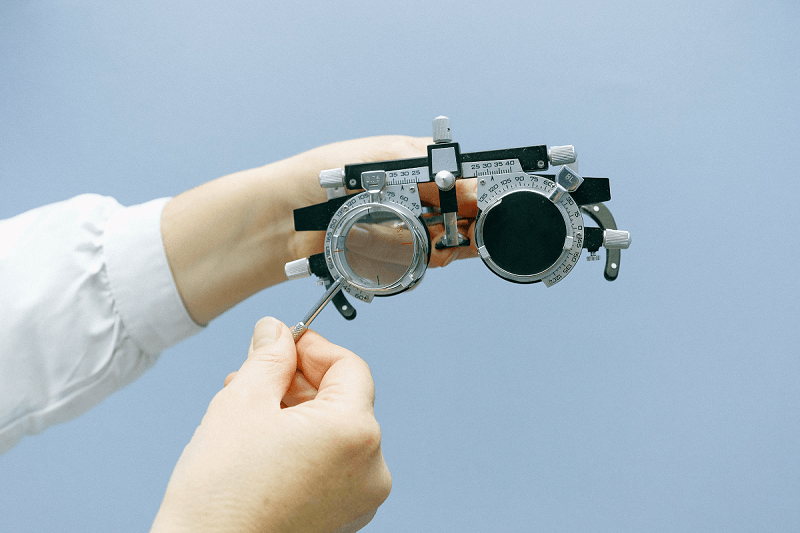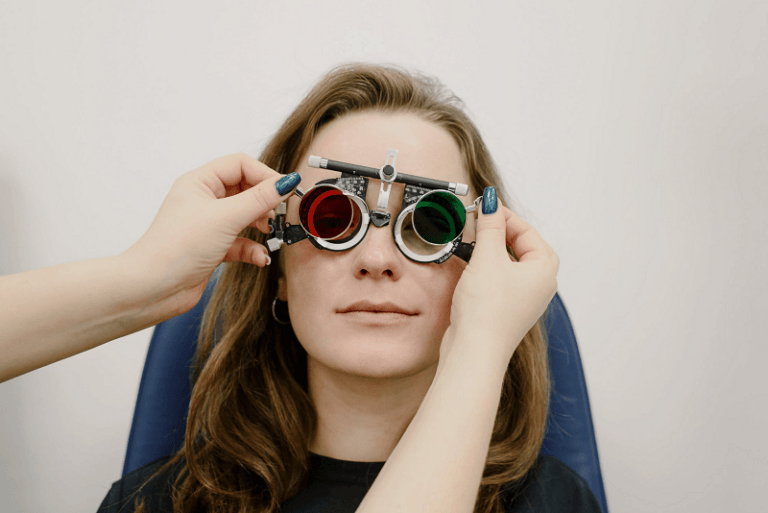Blog
Should You Choose PRK or LASIK for Dry Eyes?

Dry eye is a very common condition characterized by lack of tear production, or tears which dissipate too quickly. Those with dry eye syndrome have a number of options for treating it, including refractive surgery like LASIK and PRK.
How to Treat Dry Eyes
The symptoms of dry eye include redness, irritation, blurry vision, and sensitivity to light. Before you can treat dry eyes, you must first identify the cause, and then how often it occurs.
Testing
Comprehensive eye exams, and tear volume, composition, and quality tests can all reveal the causes of your dry eye.
Health Issues and Medications
If it’s been found that you have an underlying health issue that’s causing eye dryness, treating that issue can resolve it. Certain medications can also contribute to dry eyes, so switching to a different medication may also help.
Frequency
Those who have been diagnosed with dry eye syndrome and who only experience dryness occasionally may find the following treatments helpful:
- Adding moisture to indoor air with humidifier
- Avoiding eye irritants like smoke or pollen
- Using over-the-counter eye drops or artificial tears
- Adding more Omega-3 fatty acids to your diet
Those diagnosed with chronic dry eye syndrome may be able to treat the condition with prescription eye drops or contact lenses. However, if this is not effective, surgery may be necessary.
Two popular options for dry eye syndrome are PRK and LASIK. Both are types of laser vision correction surgery.
What Is PRK?
PRK stands for photorefractive keratectomy. The procedure reshapes your cornea with a laser. First, numbing drops are placed into your eyes. Then, an eye surgeon removes the top layer of the tissue of your cornea.
An excimer laser is then applied to your exposed cornea. The laser is able to reach deeper into the layers of your cornea’s tissue, where it corrects irregularities. Finally, to help these tissues heal, the surgeon places a contact lens-like bandage on top of your cornea.
Photorefractive keratectomy PRK surgery takes about 10 minutes to complete for both eyes. PRK takes approximately one month to achieve clearer vision.
Learn more about LASIK and if it’s the right fit for you.
What Is LASIK?
LASIK stands for laser-assisted in situ keratomileusis. Two types of laser are used in LASIK to reshape your cornea. The surgeon places numbing drops into your eyes, and then uses something called a femtosecond laser to cut a flap in the top layer, or epithelium, of your cornea.
Moving the flap aside, the surgeon then uses an excimer laser to reshape the deeper layers of your cornea’s tissue and correct the curvature of your eye. Once this is complete, the surgeon simply moves the flap back over the ocular surface, where it begins to heal instantly.
The entire procedure takes about 10 minutes to complete for both eyes. Full recovery from laser-assisted in situ keratomileusis LASIK takes several months, and only days to achieve clearer vision.
Surgery Risks
Just as with any surgery, PRK and LASIK both have possible risks and side effects, which include:
- Follow-up surgery due to insufficient corneal tissue removal
- Problems with the flap in the cornea, which can lead to infection or excessive tear production
- Changes in eye curvature due to uneven removal of corneal tissue
- Postoperative dry eye
Is PRK Better Than LASIK at Reducing Dry Eye?
Multiple studies have found that PRK is no more or less effective at reducing dry eye syndrome than LASIK, but this is actually good news. If you’re found to be ineligible for one procedure, you may still be eligible for the other.
What Are the Factors That Make You Eligible for Laser Eye Surgery?

Both surgeries require the following to be true in order to be eligible:
Age – You must be over the age of 18 in order to receive the surgery.
Nearsightedness prescription – Your prescription must be between -1.00 and -12.00 diopters.
Vision changes – You must have not experienced any significant vision changes in the past year.
Pupil size – Your pupils must be an average of 6 mm when in a dark room.
Pregnancy – You must not be pregnant or breastfeeding.
Prognosis – Your vision must be estimated to improve to at least 20/40 after surgery.
Some circumstances can render you ineligible for either surgery, including:
Thin corneas – This condition means your corneas can’t handle more invasive LASIK surgery.
Past eye surgery – Previous PRK or LASIK that increases your risk of complications.
Autoimmune conditions – These can affect your ability to heal and include arthritis or lupus.
Major conditions – Diabetes or other conditions like glaucoma can affect visual acuity.
Large pupils – These increase your risk of visual disturbances following surgery.
Chronic allergies – Allergies affecting eye healing and eyelids are contraindicated.
Which Procedure Is Right for You?
PRK may be a feasible option for you if you have thin corneas or an active lifestyle that could dislodge the corneal flap created with LASIK surgery. You may also benefit from PRK if you don’t have a history of scarring or cataracts and are in good general health.
You may be a candidate for LASIK if you have dry eye, but haven’t been diagnosed with a severe form of the condition. You may also be able to get the surgery if you don’t have uncontrolled glaucoma or cataracts that interfere with your vision.
Before any laser eye surgery procedure, a preoperative examination to identify anything that may interfere with your ability to have surgery will be completed, which you may be able to treat.
It’s important to remember that, although each surgery can get you very positive results, you need to be realistic about what they can do for you. Speaking with the surgeon at an eye institute about your concerns and sharing your health and medical information will help you to achieve the result you’re looking for.
Dougherty Laser Vision performs vision correction using a wide variety of advanced technologies. Paul J. Dougherty is an internationally respected local surgeon with over 30,000 procedures performed. To schedule a free consultation, visit us online or call our eye center today. Call (805) 422-7939 or text (818) 714-7794 to schedule an appointment!


